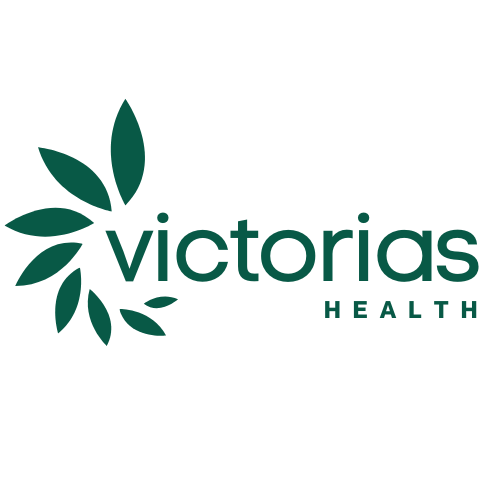Healthcare systems faced immense challenges during the COVID-19 pandemic, forcing providers to adapt rapidly.
The shift in care delivery models, increased reliance on technology, and new policy frameworks have reshaped healthcare accessibility.
Telemedicine, data-driven decision-making, and policy reforms have made it more convenient and efficient for many patients.
However, unequal access, resource strain, and mental health issues remain significant barriers to consistent care.
Positive Developments
First, let us take a look at the positive developments in healthcare.

Telemedicine and Remote Care
Telehealth emerged as a vital solution during the pandemic, allowing patients to receive care without in-person visits.
The rapid adoption of telemedicine enhanced patient access and streamlined healthcare delivery.
- Virtual consultations increased access for patients in rural and underserved areas.
- E-mental health platforms enabled patients to access therapy and psychiatric support from home.
- Remote monitoring allowed for better chronic disease management and early detection of health issues.
- Doctor of Pharmacy degree online programs expanded, helping to address pharmacist shortages and improve pharmaceutical care delivery.
Telehealth not only increased efficiency but also reduced patient wait times and overcrowding in emergency rooms. Greater flexibility in scheduling and care delivery models improved the overall patient experience.
Enhanced Public Health Surveillance and Data Use
Big data and artificial intelligence (AI) have played a significant role in improving public health monitoring and response.
Real-time data analysis allowed providers to manage demand more effectively and respond to emerging health threats.
- AI-driven models predicted infection spikes and helped manage resource allocation.
- Enhanced tracking of vaccine distribution improved immunization coverage.
- Data sharing between hospitals, health departments, and governments increased coordination and resource deployment.
Data integration improved providers’ ability to anticipate patient needs and plan for public health emergencies. AI models have made systems more responsive to real-time developments.

Policy and Structural Reforms
Governments and healthcare institutions introduced significant reforms to strengthen infrastructure and improve patient access.
Investments in healthcare funding and infrastructure have supported more flexible models of care.
- Increased government funding boosted hospital capacity and emergency preparedness.
- Mobile clinics and home-based care models increased reach in underserved areas.
- Regulatory changes allowed providers to offer services across state lines, reducing barriers to specialized care.
- Expanded Medicaid and government-assisted programs improved access for lower-income populations.
Policy changes have enhanced healthcare delivery models, making services more adaptable to patient needs.
Structural improvements have increased the ability to respond to future challenges.
Ongoing Challenges
Now that we understand the positive side of the coin, let us check the ongoing challenges.

Unequal Access to Care
Technological and socioeconomic barriers continue to limit healthcare access, particularly among vulnerable populations. Despite the expansion of telemedicine, significant gaps remain in access to care.
- Rural communities and low-income households often lack reliable internet or suitable devices for telehealth.
- Language barriers and limited health literacy prevent some populations from fully benefiting from available services.
- Geographic disparities persist, with rural areas facing shortages of healthcare facilities and specialists.
- Uneven insurance coverage creates financial obstacles for many patients.
Access issues reflect broader systemic inequalities, highlighting the need for targeted outreach and resource allocation.
Healthcare System Strain
My comments in @JarrellTDillard‘s story @business: US Job Market’s Key Driver at Risk as Health-Care Hiring Slows
Health care has been a key driver of post-pandemic employment growth in the US, accounting for about one in five new jobs across the country since 2021. Now a hiring…
— Ge Bai (@GeBaiDC) October 2, 2024
Healthcare systems remain under significant strain despite post-pandemic recovery efforts. Staffing shortages, resource limitations, and financial pressures have made it difficult to sustain consistent care.
- Widespread shortages of doctors, nurses, and support staff have increased workloads and wait times.
- ICU and acute care capacity remain insufficient in certain areas.
- Financial challenges, including reduced hospital revenues and rising operational costs, have limited system-wide improvements.
- Administrative inefficiencies have slowed the rollout of new care models and reforms.
Healthcare systems face a difficult balance between increasing capacity and maintaining quality of care under financial pressure.
Mental Health Crisis
Mental health issues have surged due to pandemic-related stress, isolation, burnout and economic insecurity.
Mental health services have struggled to meet increased demand.
- Rates of depression, anxiety, and substance abuse have risen significantly.
- Shortages of psychiatric professionals have limited access to therapy and support.
- Reduced availability of in-person care for severe mental health conditions has increased the burden on emergency services.
- Long waiting lists for psychiatric care have delayed treatment for many patients.
Expanding mental health infrastructure and increasing the availability of telehealth-based mental health services remain critical priorities.
Case Studies and Perspectives

Case studies offer a clear look at how healthcare systems have adapted since the pandemic. Structural changes, improved care models, and public health reforms have influenced healthcare accessibility in both positive and negative ways. Analyzing specific cases helps highlight successes and identify gaps that still need to be addressed.
Healthcare Transformation Post-Pandemic
Healthcare delivery experienced significant restructuring to meet the demands of the pandemic. Providers rapidly adjusted to new challenges by introducing remote care models, improving flexibility in care delivery, and developing alternative treatment plans.
- Hospitals increased remote care capacity – Virtual care services expanded rapidly, especially for patients with mobility issues or chronic health conditions.
- Logistical challenges increased – Protecting patient data and ensuring confidentiality became more complex with the rise of remote care.
- Ethical concerns emerged – Decisions about resource allocation, including ICU beds, ventilators, and staff availability, forced healthcare providers to prioritize certain patients over others.
- Expansion of hybrid care models – Combined in-person and virtual care models became standard practice, allowing patients to switch between formats depending on their needs.
Healthcare delivery now relies more heavily on a mix of in-person and remote care options, providing greater flexibility for both patients and providers.
Barriers to Access During the Pandemic

Access to healthcare declined significantly during the pandemic, exposing and deepening long-standing inequalities. Financial, technological, and geographic barriers prevented some populations from receiving adequate care.
- Higher rates of healthcare avoidance – Lower-income communities delayed or avoided care due to financial concerns and lack of insurance coverage.
- Technological barriers widened gaps – Patients in rural or low-income areas lacked internet access or devices compatible with telehealth platforms.
- Health literacy influenced utilization – Patients with limited knowledge of healthcare systems struggled to navigate appointment scheduling and care options.
- Limited outreach to vulnerable populations – Providers and public health agencies lacked targeted strategies to engage at-risk communities and address systemic barriers.
- Delayed preventative care – Routine health screenings and early interventions were postponed or canceled, leading to an increase in advanced-stage diagnoses for chronic diseases.
- Limited access to mental health care – Patients facing pandemic-related stress and trauma often lacked timely access to mental health resources due to limited infrastructure and staffing shortages.
Long-standing issues in healthcare accessibility became more pronounced during the pandemic, highlighting the need for targeted policy responses and better outreach strategies.
Healthcare Policy and Public Health Evaluation
Government and institutional responses to the pandemic have been mixed, with some successes and ongoing challenges in public health policy and healthcare infrastructure.
Emergency measures and funding stabilized healthcare systems during the height of the crisis, but long-term reforms remain inconsistent.
- Emergency funding boosted system resilience – Financial support for hospitals, healthcare providers, and public health agencies helped stabilize operations during the peak of the pandemic.
- Vaccine distribution faced logistical challenges – Supply chain issues, storage requirements, and unequal distribution created gaps in immunization coverage. Rural and underserved areas were affected the most.
- Public health preparedness improved – Data collection and real-time health monitoring enhanced the ability to respond to future health crises more effectively.
- Policy inconsistencies created gaps – Variations in mask mandates, lockdown protocols, and healthcare funding created confusion among both providers and the public.
- Expanded Medicaid access – Some states increased Medicaid coverage to include more low-income individuals, improving access to services.
- Increased investment in infrastructure – Funding supported new hospital construction, increased staffing, and improved emergency response capabilities.
Public health reforms have created a more responsive system, but policy gaps and inconsistent implementation have limited the overall impact.
Long-term funding and consistent strategies are needed to sustain improvements in delivery.
The Bottom Line
Healthcare accessibility has improved in certain areas, particularly through the expansion of telemedicine and enhanced data-driven public health responses.
Persistent challenges, including unequal access to care, staffing shortages, and mental health service gaps, remain unresolved.
Continued investment in infrastructure, targeted outreach, and more consistent policy implementation will be necessary to achieve greater equity and accessibility in systems.

